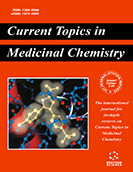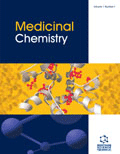Abstract
Background: Calotropis gigantea (Asclepiadaceae), a wildly growing plant, has several purported therapeutic characteristics and treats toothache and earache, sprains, anxiety, pain, epilepsy, and mental disorders.
Objective: The purpose of this study was to determine the in vitro antioxidant and in vivo hepatoprotective capabilities of a methanolic extract of Calotropis gigantea leaves (CGL) against carbon tetrachloride-induced liver injury in rats.
Methods: The Sprague Dawley rats (180-250 g) were used for the current study. The hepatoprotective activity of CGL was determined by estimating the different biochemical parameters like SGOT, SGPT, ALP, bilirubin, and in vivo antioxidant parameters like LPO, GSH, SOD, and CAT in different animal groups. We have also investigated the inhibitory potential of some significant chemical constituents of CGL on CYP2E1 through molecular docking.
Results: In vivo hepatoprotective studies indicate that the CGL extract administration caused a significant reduction [at 200 mg, SGOT (110.16 IU/L), SGPT (101.33 IU/L), ALP (186.66 IU/L), bilirubin (1.1 mg/dl), and LPO (6.933 M/mg protein)] and elevation [GSH (14.051 M/mg protein), SOD (257.5%), and CAT (15.975 μM)] in enzyme activity in a dose-dependent manner. Unfortunately, CGL extract has not shown a more potent activity than the standard drug Silymarin. All the phytoconstituents have shown potent binding affinity with CYP2E1 compared to the native ligand. Amongst all the phytoconstituents, Medioresinol was the most active and potent molecule that has developed compelling interactions with CYP2E1.
Conclusion: From free radical scavenging activity, it was concluded that CGL extract exerts more scavenging activity than ascorbic acid, which indicates a high level of polyphenols and tocopherols and also exhibited in vivo hepatoprotective activity. From the molecular docking, it has been concluded that Calotropis gigantea can potentially inhibit CYP2E1 and prevent the generation of free radicals, which will ultimately reduce oxidative stress and associated diseases.
Keywords: Calotropis gigantea, CYP2E1, methanolic extract, SGOT, SGPT, 3CL4, molecular docking, carbon tetrachloride.
Graphical Abstract
[http://dx.doi.org/10.11604/pamj.2009.3.17.125] [PMID: 21532726]
[http://dx.doi.org/10.1016/C2013-0-19055-1]
[PMID: 15209149]
[http://dx.doi.org/10.1016/j.freeradbiomed.2008.02.008] [PMID: 18342017]
[http://dx.doi.org/10.1016/j.tibs.2013.08.009] [PMID: 24120034]
[http://dx.doi.org/10.1016/j.bbabio.2014.02.005] [PMID: 24530357]
[http://dx.doi.org/10.1038/nature04634] [PMID: 16612386]
[http://dx.doi.org/10.3389/fphys.2017.00211] [PMID: 28443030]
[http://dx.doi.org/10.2147/CIA.S158513] [PMID: 29731617]
[http://dx.doi.org/10.1002/jbt.10058] [PMID: 12616644]
[http://dx.doi.org/10.1155/2016/3164734] [PMID: 26881021]
[http://dx.doi.org/10.1155/2012/217037]
[http://dx.doi.org/10.1248/yakushi.126.885] [PMID: 17016019]
[http://dx.doi.org/10.1515/znc-2001-7-826] [PMID: 11531102]
[http://dx.doi.org/10.1515/reveh-2020-0048] [PMID: 32970608]
[http://dx.doi.org/10.1080/713611034] [PMID: 12708612]
[http://dx.doi.org/10.18821/0016-9900-2019-98-3-328-331]
[http://dx.doi.org/10.1016/j.arabjc.2020.10.038]
[http://dx.doi.org/10.1016/j.ijbiomac.2020.02.134] [PMID: 32068059]
[http://dx.doi.org/10.5267/j.ccl.2019.10.001]
[http://dx.doi.org/10.1007/BF03046937]
[http://dx.doi.org/10.1007/BF03050876]
[http://dx.doi.org/10.1080/14786419.2016.1266349] [PMID: 27936921]
[http://dx.doi.org/10.7897/2277-4343.05238]
[http://dx.doi.org/10.1021/tx200080b] [PMID: 21766881]
[http://dx.doi.org/10.1016/j.cbi.2020.109056] [PMID: 32198084]
[http://dx.doi.org/10.1016/j.redox.2014.08.009] [PMID: 25462066]
[http://dx.doi.org/10.1007/978-3-319-09614-8_4] [PMID: 25427901]
[http://dx.doi.org/10.1080/03602532.2019.1632889] [PMID: 31203697]
[http://dx.doi.org/10.1074/jbc.M110.109017] [PMID: 20463018]
[http://dx.doi.org/10.4062/biomolther.2014.016] [PMID: 24753821]
[http://dx.doi.org/10.22159/ajpcr.2020.v13i5.37909]
[http://dx.doi.org/10.1007/s13197-011-0251-1] [PMID: 23572765]
[http://dx.doi.org/10.1021/jf000220w] [PMID: 10956156]
[http://dx.doi.org/10.1186/s13104-015-1618-6] [PMID: 26518275]
[http://dx.doi.org/10.5530/pj.2016.4.15]
[http://dx.doi.org/10.1016/j.jaim.2015.08.001] [PMID: 27297507]
[http://dx.doi.org/10.1186/1472-6882-11-17] [PMID: 21356055]
[http://dx.doi.org/10.1007/978-1-4939-2269-7_19] [PMID: 25618350]
[http://dx.doi.org/10.1021/ja00051a040]
[http://dx.doi.org/10.33696/Pharmacol.2.014]
[http://dx.doi.org/10.2174/1570180818666210427095203]
[http://dx.doi.org/10.2174/2666001601666210322121802]
[http://dx.doi.org/10.35652/IGJPS.2020.10409]


















.jpeg)










